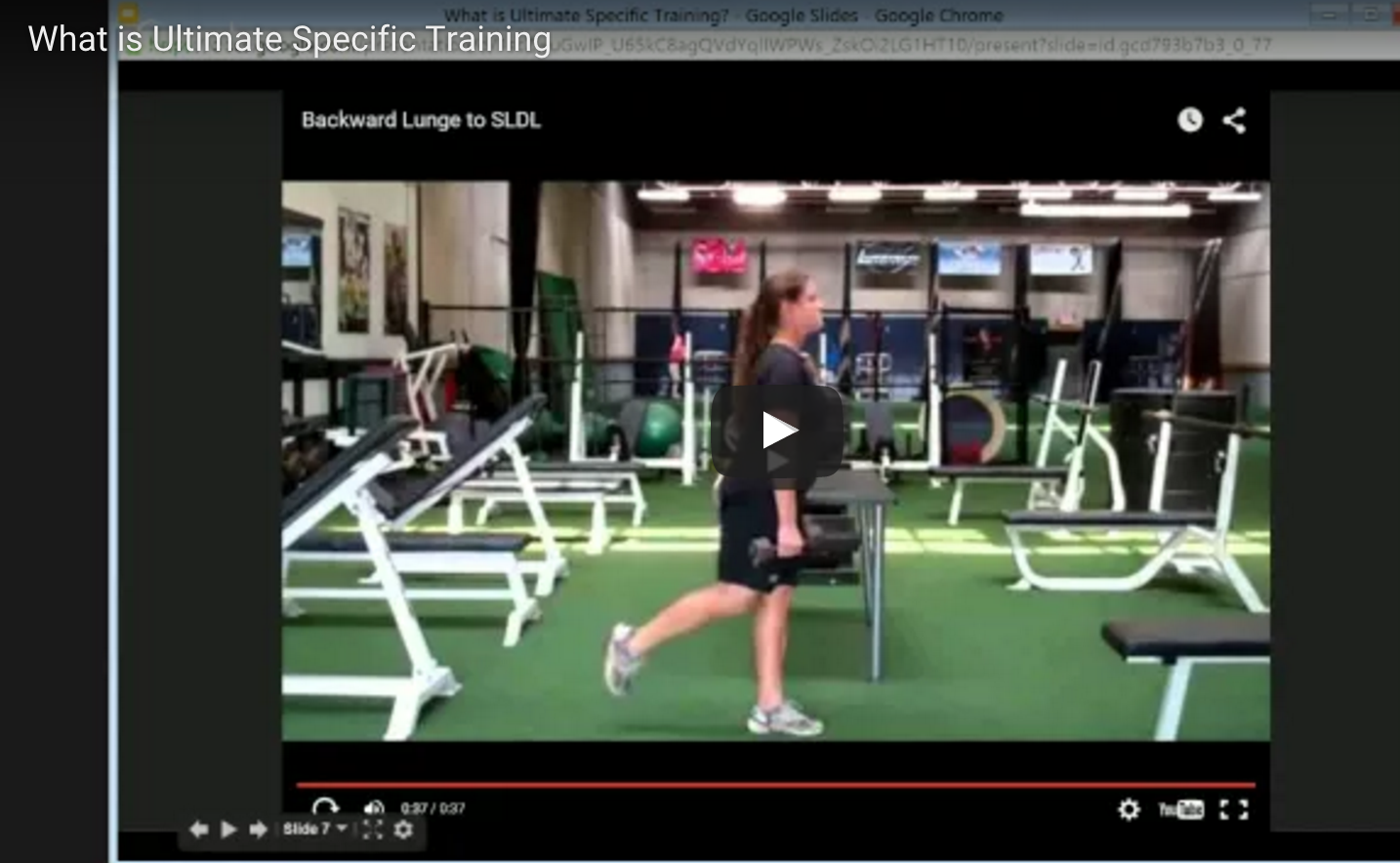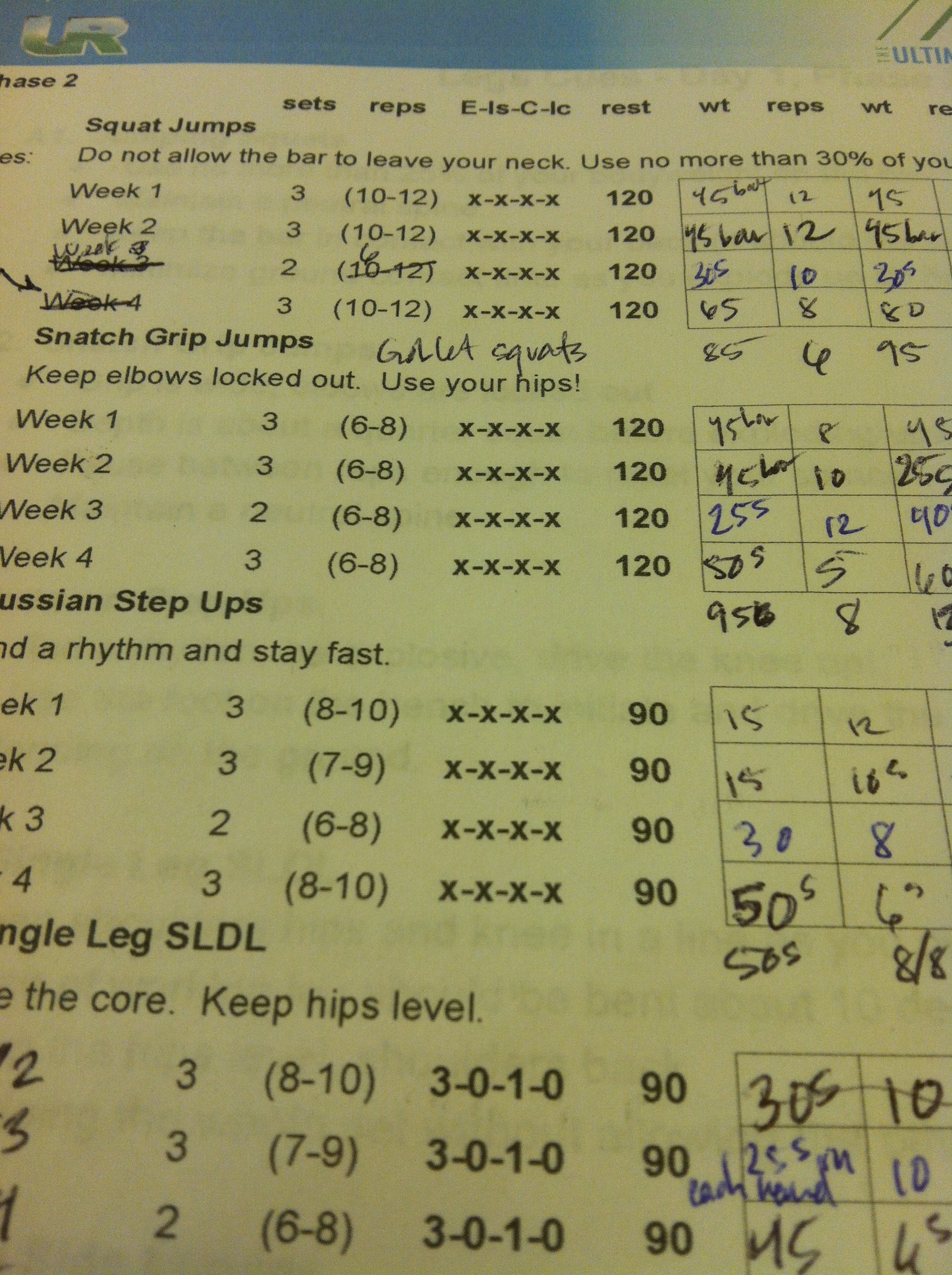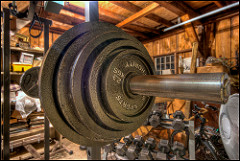 Lifting these will make you faster and more durable. The UAP will make you lift these. Photo by .imelda on Flickr.
Lifting these will make you faster and more durable. The UAP will make you lift these. Photo by .imelda on Flickr.
I started playing ultimate a long time ago, and at some point soon after I realized that I was down to work out. Sometimes it was because I loved how it made me feel and sometimes it was because I knew I need to do it to stay relevant. Either way, it always paid off to some degree, keeping me physically able enough to get minutes on Truck Stop, a team that competes at Nationals every year.
But after 2014 wrapped up, I wanted more than just enough. So I used the Ultimate Athlete Project to train in the offseason. Then I had my best season ever.
Here’s an explanation of the program and what I used it for
I used the UAP, a program by strength and conditioning coach Melissa Witmer, most intensely from December of last year through the start of the pro season, in April. My major focus was performing well in the club season, which I knew I needed to get stronger for. Being strong makes it so there’s more force behind the movements you make on the field, it lets you push yourself harder and for longer periods of time, and it helps you avoid injuries or recover more quickly if they do happen.
The UAP is divided into phases that last about a month each. My understanding of the reasoning here is that your body generally starts getting used to a set of exercises somewhere between three and six weeks from when you start doing them, and at that point you start to see fewer gains.
After a month-long prep phase, which I used to loosen up and do maintenance on aches that had built up over the year plus get to know the movements the program would have me doing, I really dug in on the alternating strength and power phases. Basically, there’d be a month of major strength lifts– think squats, deadlifts, bench press– with low reps and high weight followed by a month of resistance exercises that were more about speed. I like the strength/power balance because I see the logic in creating raw force and then turning it toward ultimate-specific movements.
Having guidance and regularity on the major strength lifts had me feeling nice and strong after a couple of months. So did a lot of the UAP’s upper body stuff, largely because it focused a lot on the back. People who say upper body doesn’t matter for ultimate are stuck in their thinking about what “upper body” means. I don’t think there’s any question that a strong back, core, shoulders and arms help with playing this sport.
A final thing about the UAP’s lifts themselves: the video section made it easy to learn new ones, and when I took video of my form it was great to be able to compare what I was doing with what I needed to be doing.

I used the weight lifting parts of the program the most. After the strength and power phases, the program is more about more conditioning and plyos. I didn’t do much with the UAP past April because I felt other things were pushing me the way I needed. This was especially true once Truck Stop’s workouts started up in the summer.
The UAP was really about taking what I knew and leveling up
It’s worth noting what my base was: I had decent experience with strength training coming into this, but not great. I’ve followed Tim Morrill for years and took a lifting class in college (which, like an idiot, I didn’t really put to use at the time), and have lifted intermittently throughout my time playing. I’d feel okay saying someone with less experience than me would be able to get just as much as I got out of the UAP, and quite possibly more. I’m not as okay, though, saying just how much less you could know and still get something out of it.
What I’m positive of is that someone who knows more than me could still get something out of the UAP. That’s largely because I think the biggest benefit of the program is something bigger than the what or why. It was that the UAP had me doing a regular lifting program that included heavy lifts is what made it a winner. The rest is details.
I printed the UAP’s plans out out and put them in a folder, meaning they were there and on paper, expecting me to fill the tracking cells (as in weights lifted and reps for each day). The UAP set some expectations and guidelines that were easier to see as norms than something I might have created for myself, or even something a friend could have written down. For me, the UAP’s schedule, with places to record my progress in writing, helped me make lifting a regular part of my routine. The program kept me accountable and feeling like I was progressing.

The UAP got me lifting seriously, and feeling like there was thinking behind it. It also very clearly made me stronger (which feels especially encouraging now that I’m getting started on another offseason). I really can’t comment on whether it has many flaws with science or other ways of approaching fitness— I feel that’s a field with as many diverging opinions as any — but I can say that by and large, the UAP passed my “this feels right” test, which for me meant it was physically difficult, I felt like I made progress as the plan unfolded, and I gained confidence from my commitment to it.
As for the actual season of ultimate that followed…
Let me first acknowledge the Skyd tradition of rating products on whether or not they make a good hat. The Ultimate Athlete Project makes for an awful hat. I award it no points in this category.
2015, however, was a success for me as an athlete. I felt healthy all season long, noticeably more so on the days after track than in years past; I was fresher on Sunday mornings than I’ve ever been; teammates told me I looked faster and opponents said I was tougher to match up against; I transitioned on playing on my team’s O line confidently, and a big reason that mental switch was a smooth one was because I knew I had put the work in.
The UAP helped me put more thinking behind the offseason work I did so that staying strong, loose, and mobile during the year was a matter of maintenance rather than having to play catch up. I felt good pushing really hard all summer, especially through September. Ultimate seasons take a toll, and I’ve started to break down before. I don’t have a hard time drawing a connection between more dedicated lifting being able to withstand rising intensity for longer than in the past.
I’m excited about this offseason. I’m working to make my hips stronger, and I want to be better at recruiting power for whatever step I need to take next, particularly if it’s the first one in a new direction. Thanks to my time with the UAP last offseason, I know a lot more about what a few months of focused lifting will do for me, and how to work little individual projects into that.
In explaining what she’s trying to do with the Ultimate Athlete Project on her site, Melissa says the following:
“I really believe that a lot of ultimate players have a huge amount of athletic potential that they’re not tapping into because they’re stuck in programs for general fitness or because they don’t have an organized, well thought out strength and conditioning program. And this is exactly what the Ultimate Athlete Project provides.”
Cosign.
The Ultimate Athlete Project is only open to new members a couple of times per year. Now is one of those times, but it closes on Thursday, November 12th.










Comments Policy: At Skyd, we value all legitimate contributions to the discussion of ultimate. However, please ensure your input is respectful. Hateful, slanderous, or disrespectful comments will be deleted. For grammatical, factual, and typographic errors, instead of leaving a comment, please e-mail our editors directly at editors [at] skydmagazine.com.